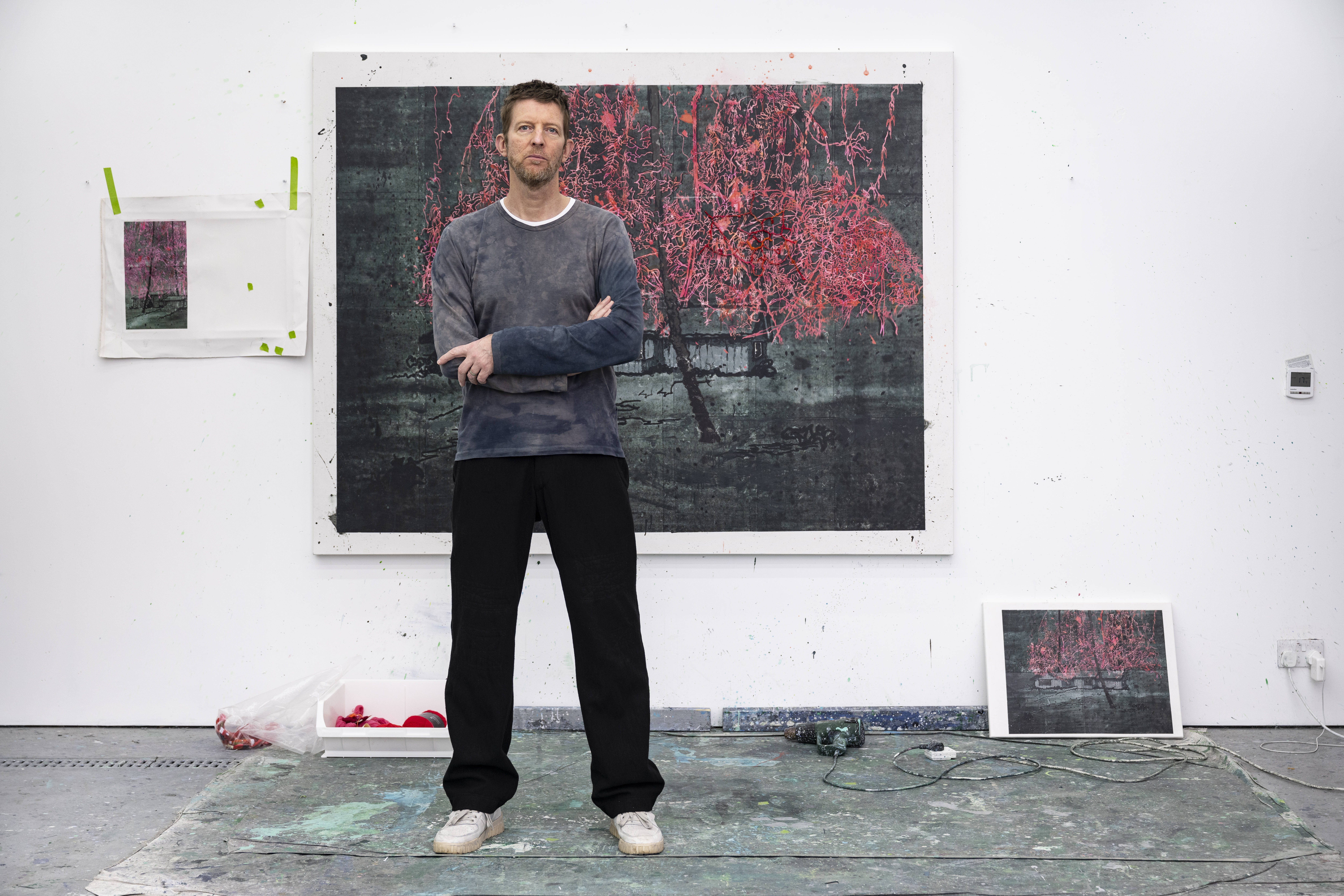
Michael Raedecker on Art, Life, & Everything In Between
The absence of human presence in this Dutch artist’s woven paintings invite us to contemplate architecture as a mental or emotional space
For Michael Raedecker, painting is timeless. Or, more precisely, a painting exists in a world in which there is no time.
The acclaimed Dutch artist describes a kind of edge-of- consciousness moment in his ambient, threaded paintings, documenting memories held within domestic spaces and objects – swimming pools, huts, houses even parked cars. Raedecker’s landscapes feature no humans, yet pulsate with humanity.
For Raedecker, the surface is a hole. Puddles and swimming pools are reflective; caves and garages are voids. As fellow artist and writer Stuart Cumberland writes in a new book made in collaboration with the acclaimed Dutch artist:
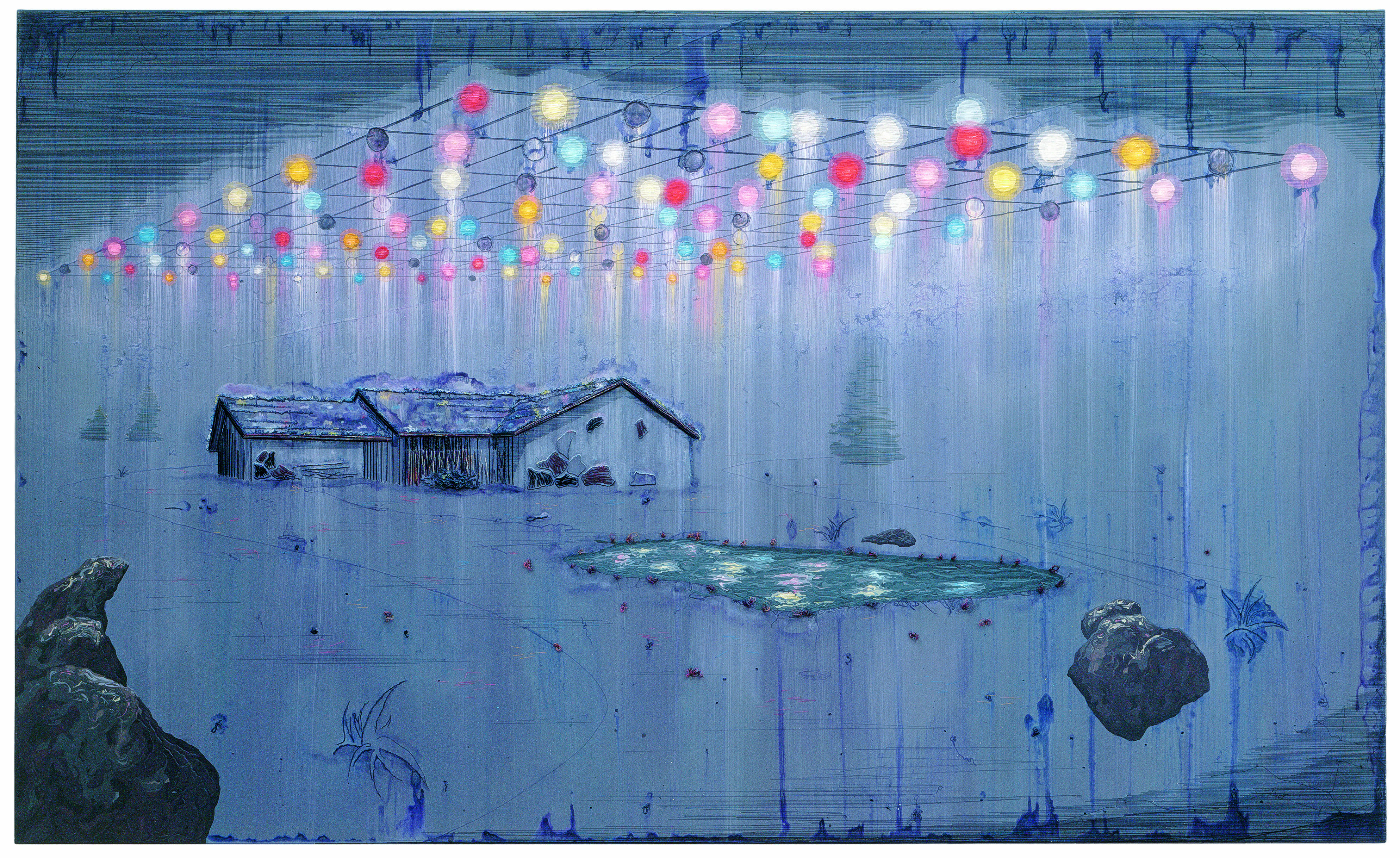 Michael Raedecker, brilliant gloom, 2004. Acrylic and thread on canvas, 190.5 x 309.9 cm (75 x 122 in). Copyright The Artist / Courtesy of the Artist and GRIMM, Amsterdam / New York / London. Collection Art Institute of Chicago, IL
Michael Raedecker, brilliant gloom, 2004. Acrylic and thread on canvas, 190.5 x 309.9 cm (75 x 122 in). Copyright The Artist / Courtesy of the Artist and GRIMM, Amsterdam / New York / London. Collection Art Institute of Chicago, IL
“Raedecker creates space. Through his paintings, he forms voids that provide specific gaps for the viewer to inhabit. Therefore, he returns to the image of the habitat. Equally the hut, swimming pool, car or chair. The motifs notably contradict the hole as empty. Don’t these doorways and windows form not so much absence, but conversely a perceived physical but invisible presence at the centre of the image?”
Since the very beginning of his 30-year career as a painter, Raedecker has incorporated embroidery into his works as a visual counterpoint to his washed-out application of color. The muted hues of those suburban homes, pools, and empty rooms are penetrated with needle and thread, sewing a kind of form into their materiality. But Raedecker wasn’t always as sure-handed or clear of mind. At the very start of his career, he struggled with an all-too-common feeling of imposter syndrome.
“I started painting in my late twenties and felt like an intruder because I didn’t have the history or education that people my age had. I was always drawing as a child, but when I became a teenager, it was just drawing fashion, men or women in flashy outfits, never really working with paint as such.”
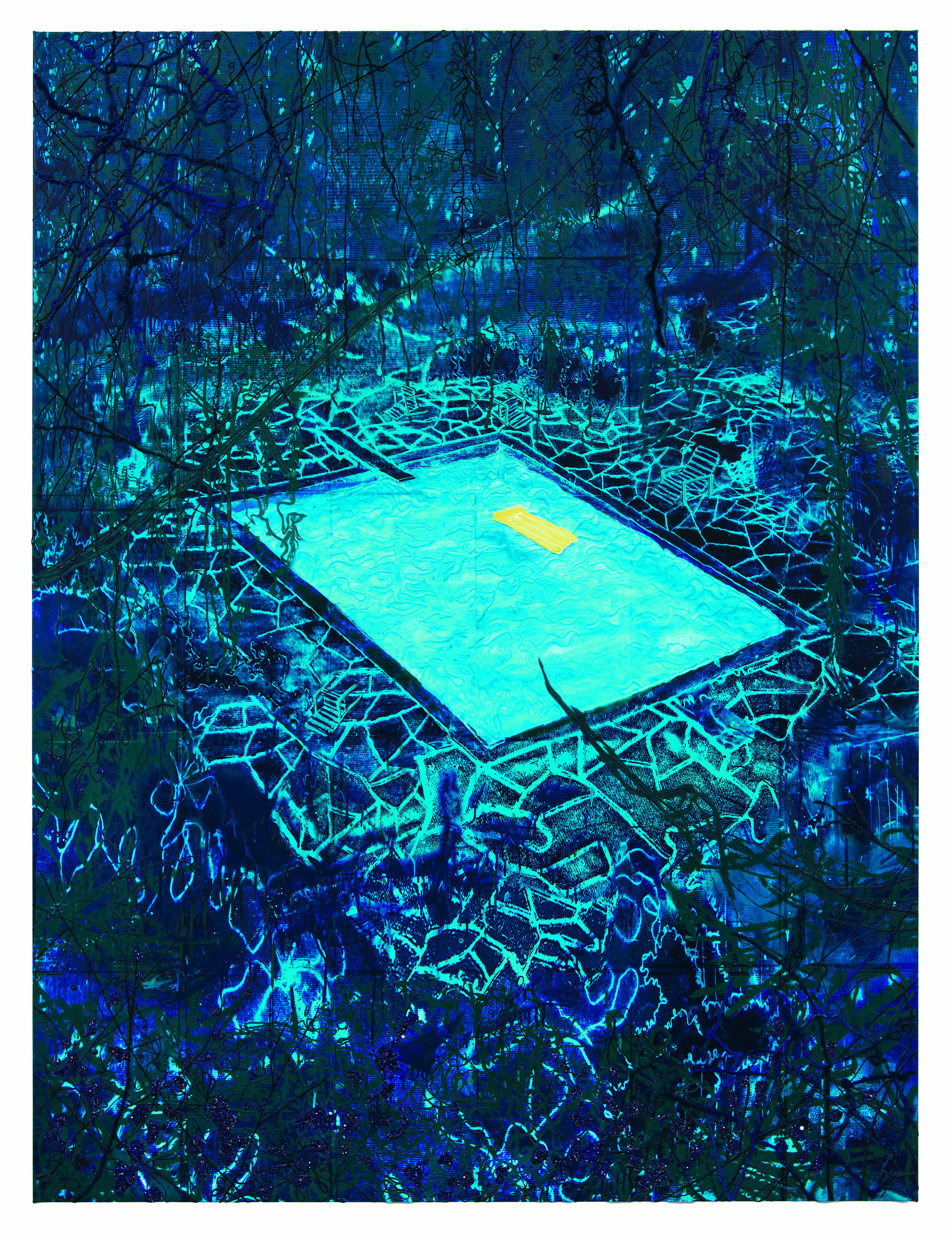 Michael Raedecker, circuitous, 2022. Laser printer pigment transfer, dispersion, beads, glitter and thread on canvas, 185 x 140 cm (72 7/8 x 55 1/8 in). Copyright The Artist / Courtesy of the Artist and GRIMM, Amsterdam / New York / London
Michael Raedecker, circuitous, 2022. Laser printer pigment transfer, dispersion, beads, glitter and thread on canvas, 185 x 140 cm (72 7/8 x 55 1/8 in). Copyright The Artist / Courtesy of the Artist and GRIMM, Amsterdam / New York / London
Today Raedecker’s work is held in major museum collections, including the Art Institute of Chicago; Kunstmuseum in The Hague; the Guggenheim Museum, and the Tate, among others. A major retrospective of his work will take place at the Kunstmuseum in the Hague in February 2024.
Raedecker’s process begins with layering. His preliminary painted compositions are digitally scanned, and laser printed on canvas, then heightened with dripped paint and finished with sewing and embroidery to create a textual materiality, harkening back to his fashion career upbringing.
His elaborate needlework adds linear definition to representational forms and the thread and paint visually mix together in areas of dense detail or abstraction. Perhaps it's unsurprising then that from an early age, he believed a career of haute couture would be his.
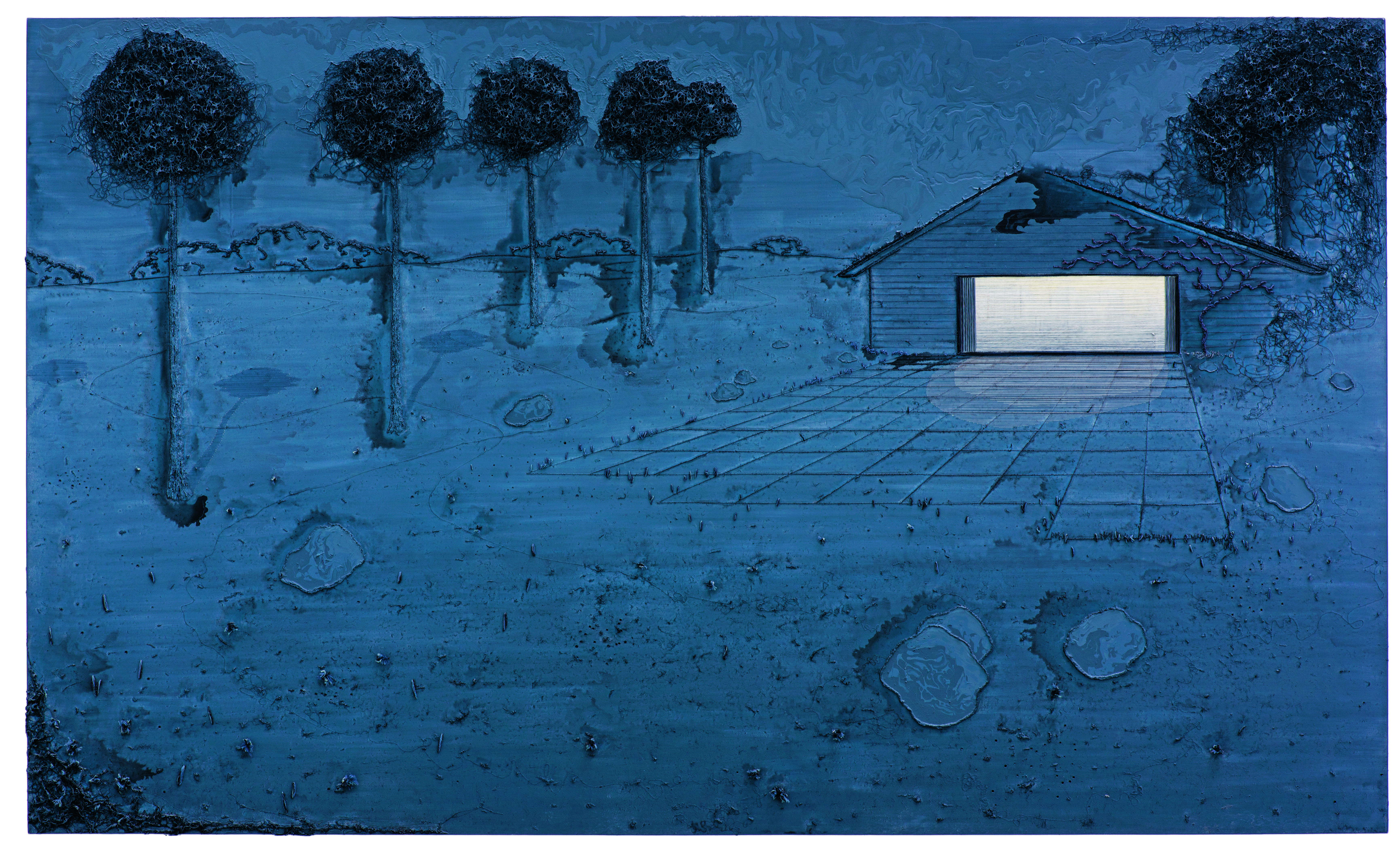 Michael Raedecker, ins and outs, 2000. Acrylic and thread on canvas, 198 x 330 cm (78 x 129 7/8 in). Copyright The Artist / Courtesy of the Artist and GRIMM, Amsterdam / New York / London
Michael Raedecker, ins and outs, 2000. Acrylic and thread on canvas, 198 x 330 cm (78 x 129 7/8 in). Copyright The Artist / Courtesy of the Artist and GRIMM, Amsterdam / New York / London
“In Holland at that time we could get German TV and twice a year they would have a programme about the fashion shows in Paris," Raedecker tells the art critic John Chilver in the new book dedicated to the artist.
"You would get all the big names of that time like Gaultier, Claude Montana, Lagerfeld, the Japanese designers like Comme des Garçons and Yamamoto. It felt exotic and glamorous. I applied for a BA in fashion design and became obsessive about it. Then, later, I did my apprenticeships in Paris and worked with Martin Margiela.”
However, before very long Raedecker swapped couture for the canvas, and the sewing machines in the small room in his attic were moved aside in order to make room to paint. A chance discovery in his college library of a book of Winston Churchill paintings prompted the first of two major movements in his early career.
 Michael Raedecker, impasse, 2020. Acrylic, laser pigment transfers, dispersions and threads on canvas, 127.5 x 88.5 cm (50 1/4 x 34 7/8 in). Copyright The Artist / Courtesy of the Artist and GRIMM, Amsterdam / New York / London. Collection AkzoNobel Art Foundation, Amsterdam (NL)
Michael Raedecker, impasse, 2020. Acrylic, laser pigment transfers, dispersions and threads on canvas, 127.5 x 88.5 cm (50 1/4 x 34 7/8 in). Copyright The Artist / Courtesy of the Artist and GRIMM, Amsterdam / New York / London. Collection AkzoNobel Art Foundation, Amsterdam (NL)
“What caught my eye was the aesthetics of his (Churchill's) paintings. First of all, is this even art? No, he was an unpretentious Sunday painter. Although interestingly, his tutor was William Nicholson, Ben’s father, who was a significant painter. And he would get the odd lesson from Sickert. He was definitely serious about painting, but there were no pretences. And he wrote this essay with the wonderful title, Painting as a Pastime."
"That’s when the idea came, well hang on, if I start to use embroideries, that’s a real pastime. Plus I will go against this whole seriousness about painting that seemed to be going on and introduce a non-art technique. With that Churchill discovery, it started to fall into place.”
At this time in the Eighties, Raedecker was feeling paralyzed both by the weight of art history, and what he might be able to add to it, but also bym the art of the day which, to his mind, seemed characterised by appropriation or theoretical response.
“I did not feel a connection, probably a generation gap, and had to go against that. I decided to use something that’s not even art [the Churchill reproduction] and then add this non-art technique to it, embroidery, and that would be my way of working. So that’s how I started in my small room in the attic.”
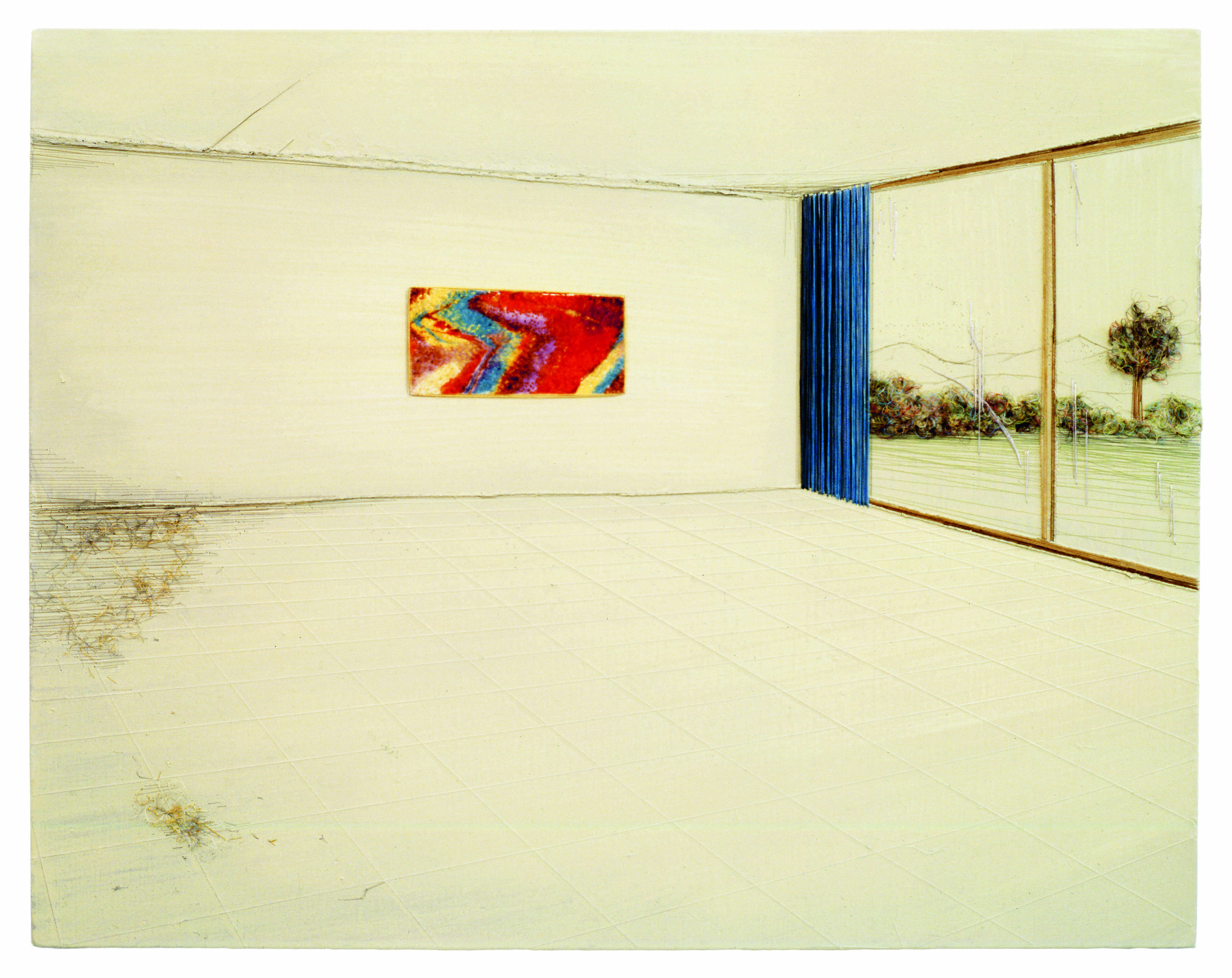 Michael Raedecker, abstract, 1998. Acrylic, fabric and thread on canvas, 66 x 84 cm (26 x 33 1/8 in). Copyright The Artist / Courtesy of the Artist and GRIMM, Amsterdam / New York / London
Michael Raedecker, abstract, 1998. Acrylic, fabric and thread on canvas, 66 x 84 cm (26 x 33 1/8 in). Copyright The Artist / Courtesy of the Artist and GRIMM, Amsterdam / New York / London
Raedecker copied his reproductions of Winston Churchill paintings onto the canvas using a transfer technique he had discovered while painting his kitchen floor with acrylic varnish. When it dried, he noticed that the paper he had used to cover certain sections had transferred onto another surface.
“That gave me the idea to use it when I was still doing fashion. I made fabric pieces, almost like badges, with a small transfer on them and fitted those onto clothes. Thinking about what I was going to paint and not really being interested in being a virtuoso painter, I had that technique at hand. I’d print my image on laser copies and transfer the pigments on canvas.”
In 1992 Raedecker visited the groundbreaking, Jan Hoet-curated Documenta. It was to have another direction-defining effect.
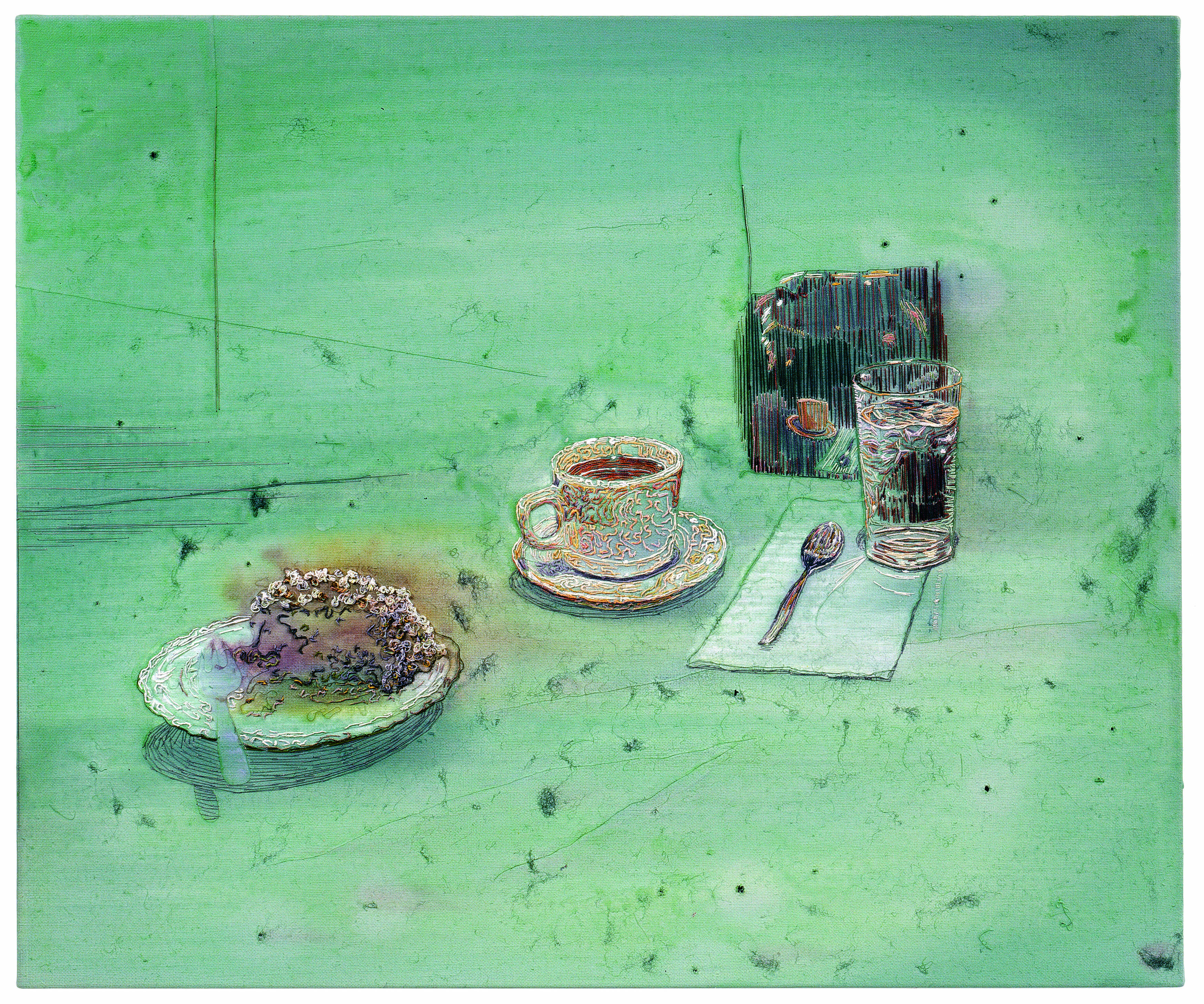 Michael Raedecker, therapy, 2005. Acrylic and thread on canvas, 63 x 75 cm (24 3/4 x 29 1/2 in). Copyright The Artist / Courtesy of the Artist and GRIMM, Amsterdam / New York / London
Michael Raedecker, therapy, 2005. Acrylic and thread on canvas, 63 x 75 cm (24 3/4 x 29 1/2 in). Copyright The Artist / Courtesy of the Artist and GRIMM, Amsterdam / New York / London
“It was the first time I saw the work of Marlene Dumas, Raoul de Keyser but most importantly, Luc Tuymans. I was looking for my next step, and seeing his work, it was as if I saw something that was in my head but hadn’t fully figured it out for myself yet.”
Tuymans visited the Rijksakademie a couple of times and subsequently Raedecker’s studio in Antwerp. “Tuymans was definitely the most influential artist for me at that time. I liked the aesthetics, and he was literally looking back to real events that had happened in history and then translating that into his work.”
“He was still very much using the idea of the photograph in relation to painting. And I felt that a photograph is just a tool that is available and didn’t really feel that I had to legitimise what I was doing with the source material. It was more something that you can use and mould in your own way, like sampling in music. The source material gets lost in translation along the way.”
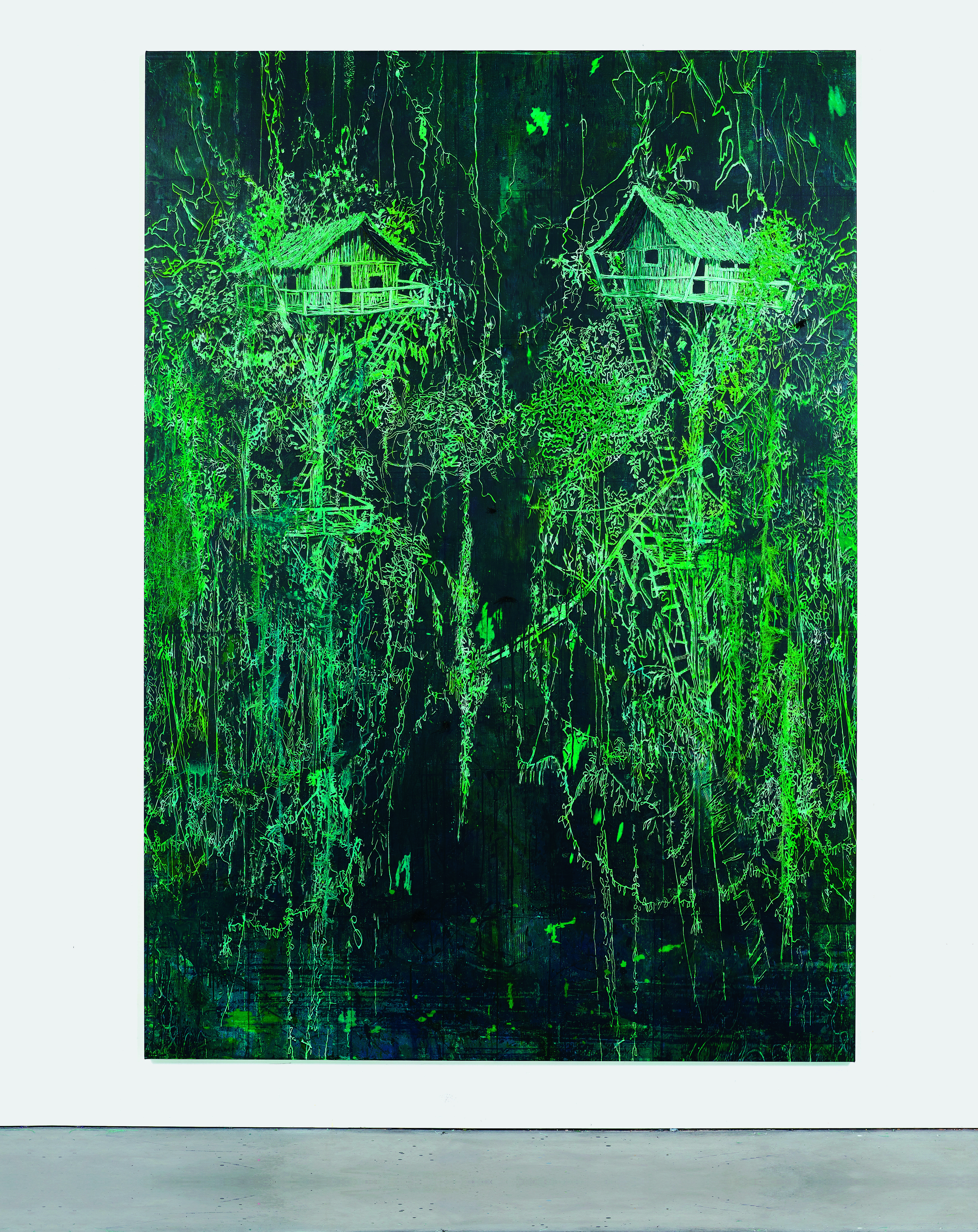 Michael Raedecker, parallel visitation, 2021. Laser printer pigment transfer, dispersion, acrylic and thread on canvas, 260 x 183 cm (102 3/8 x 72 1/8 in). Copyright The Artist / Courtesy of the Artist and GRIMM, Amsterdam / New York / London
Michael Raedecker, parallel visitation, 2021. Laser printer pigment transfer, dispersion, acrylic and thread on canvas, 260 x 183 cm (102 3/8 x 72 1/8 in). Copyright The Artist / Courtesy of the Artist and GRIMM, Amsterdam / New York / London
Like Tuymans, Raedecker was also not focussed on something original but rather on using what was around. At the Rijksakademie, he had started a group of works that bordered on autobiographical.
“I was looking at images from TV series that I had grown up with when I was quite young. Mostly American TV series that appealed to me as a kid living in Holland and seeing this country far, far away where life seemed to be incredibly prosperous."
“I was interested in that slippage of how you look at an image and what does it really mean or communicate. After all, in a painting it is all translated into this one image. And I used the idea of the suburb as the setting and made a series of works with that. A place seemingly safe and innocent."
“A car parked in front of a house says that people are home. The house becomes a facade, and we cannot see what is going on inside, only speculate. A lot of information was left out, which enhances a certain atmosphere as you’re not really sure what is going on here.”
Basing his work on found photographs, Raedecker became aware that he needed to reduce the amount of information present in those images.
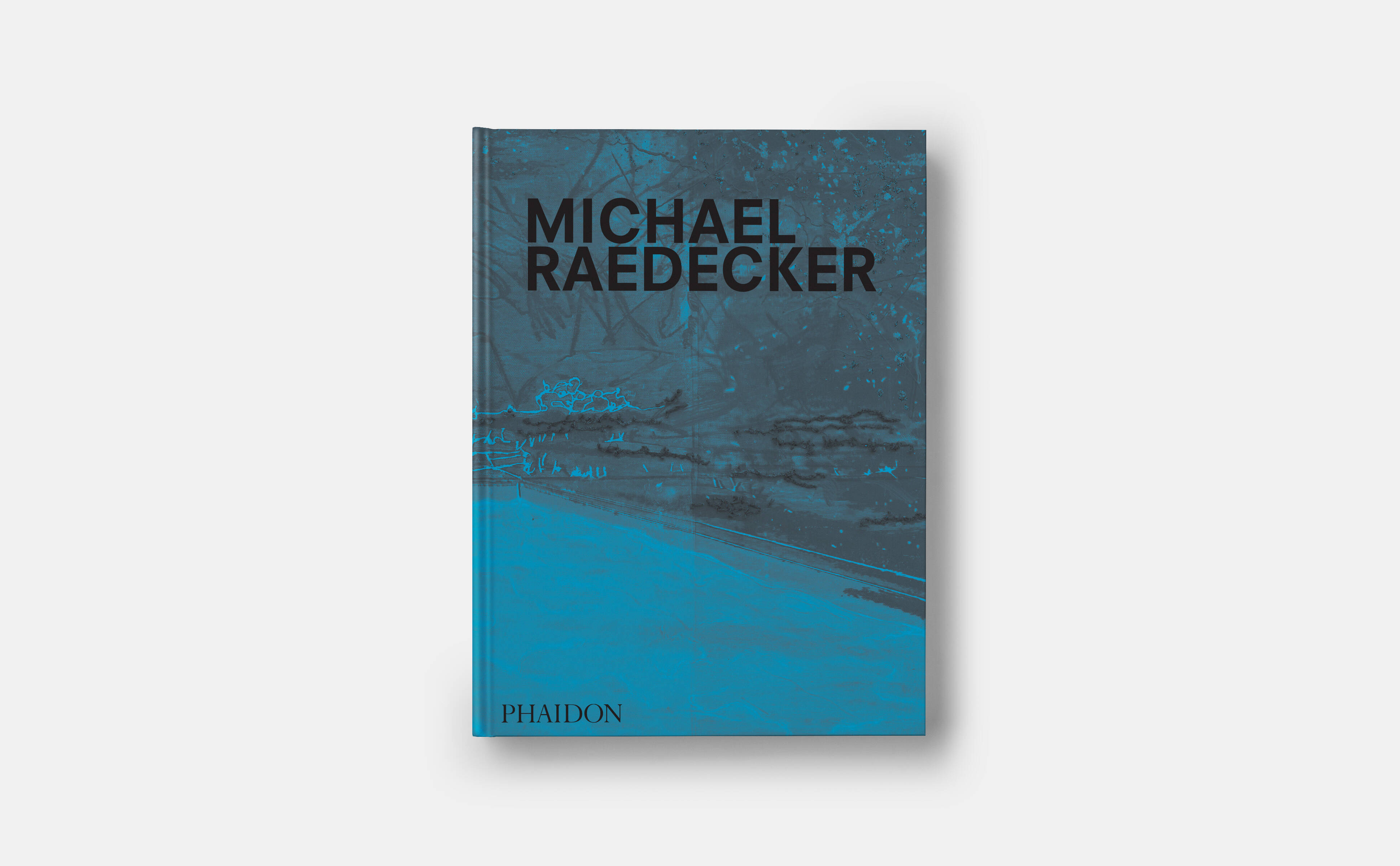
“With paint I was treating the canvas more as a kind of monochrome screen, a bit like a backdrop. Then with the threads, I found different ways to use them. I didn’t want to paint details, but I could just pour some paint and it would actually enclose a house. But that could also be a cloud behind the house, whilst it also had a psychological function. It could look oppressive in the way it was literally enclosing the house.”
Raedecker would cut thin machine threads using scissors and let them fall in the wet pool of paint, saturating them so they looked like bushes or the top of a tree. “It had a psychological effect because it became slightly abject. So it was creating figuration, using a playful way of making and finding these little tools that I could use, little ways of working. I was slowly expanding my vocabulary, finding painting devices in connection with the craft of the embroideries.”
Raedecker continues to expand his artistic vocabularly although one thing (for now) remains present. the abscence of presence in his paintings.
“I never have people in my paintings, but obviously it is about our presence and absence. What is unique about painting is that you can have an image without people, but it’s all about us. You cannot make a movie or write a novel without seeing or describing people, but in painting you can.”
Look out for an Artspace edition by Michael Raedecker in collaboration with his gallery GRIMM coming soon. Meanwhile, you can take a look at the Phaidon book made in collaboration with the artist and featuring written contributions from Kate Zambreno, Laura McLean-Ferris, Martin Herbert, John Chilver, and Claudia Swan, here.